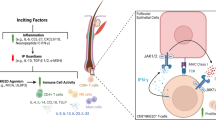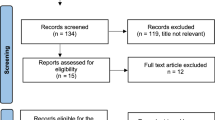Abstract
Purpose
The purpose of this work is to determine the prevalence of chemotherapy-induced irreversible alopecia (CIIA), which is defined as an alopecia that exists at least 6 months after completion of chemotherapy and factors affecting CIIA in early breast cancer patients.
Methods
We performed a cross-sectional study. We retrospectively identified breast cancer patients who had received AC (Adriamycin, Cyclophosphamide) or AC-T (AC followed by Taxane) as neoadjuvant or adjuvant chemotherapy. We conducted questionnaire survey regarding alopecia and measured hair density using phototrichogram.
Results
From February 2015 to May 2015, among 265 patients who responded properly to the questionnaire, the women who answered they had severe alopecia (alopecia > 50% of scalp) were 19 patients (7.2%). AC-only and AC-T treated patients reported severe alopecia in 2.7% and 10.5%, respectively, which were significantly different (p < 0.001). Mean hair density was 75 hair/cm2 (range 42–112) and 75.2/cm2 (range 48.3–102) on occipital area and vertex area, respectively. Hair loss was the most frequent in parietal area (42.6%). Half of total patients (46%) and 73% of CIIA patients regarded that their hair became thinner after chemotherapy
Conclusions
We found that significant proportion of early breast cancer patients were suffering from severe CIIA, especially when they had been treated with AC followed by taxane regimen.



Similar content being viewed by others
References
Early Breast Cancer Trialists’ Collaborative G (2005) Effects of chemotherapy and hormonal therapy for early breast cancer on recurrence and 15-year survival: an overview of the randomised trials. Lancet 365(9472):1687–1717. doi:10.1016/S0140-6736(05)66544-0
Cash TF (2001) The psychology of hair loss and its implications for patient care. Clin Dermatol 19(2):161–166
Browall M, Gaston-Johansson F, Danielson E (2006) Postmenopausal women with breast cancer: their experiences of the chemotherapy treatment period. Cancer Nurs 29(1):34–42
Palamaras I, Misciali C, Vincenzi C et al (2011) Permanent chemotherapy-induced alopecia: a review. J Am Acad Dermatol 64(3):604–606. doi:10.1016/j.jaad.2010.03.020
Tran D, Sinclair RD, Schwarer AP et al (2000) Permanent alopecia following chemotherapy and bone marrow transplantation. Aust J Dermatol 41(2):106–108
Masidonski P, Mahon SM (2009) Permanent alopecia in women being treated for breast cancer. Clin J Oncol Nurs 13(1):13–14. doi:10.1188/09.CJON.13-14
Prevezas C, Matard B, Pinquier L et al (2009) Irreversible and severe alopecia following docetaxel or paclitaxel cytotoxic therapy for breast cancer. Br J Dermatol 160(4):883–885. doi:10.1111/j.1365-2133.2009.09043.x
Tallon B, Blanchard E, Goldberg LJ (2010) Permanent chemotherapy-induced alopecia: case report and review of the literature. J Am Acad Dermatol 63(2):333–336. doi:10.1016/j.jaad.2009.06.063
Kluger N, Jacot W, Frouin E et al (2012) Permanent scalp alopecia related to breast cancer chemotherapy by sequential fluorouracil/epirubicin/cyclophosphamide (FEC) and docetaxel: a prospective study of 20 patients. Ann Oncol 23(11):2879–2884. doi:10.1093/annonc/mds095
Lee SH, Kang JS, Jeon IK et al (2013) Two-point scoring method for the evaluation of pattern hair loss by phototrichogram using a headband and a tapeline. Skin Research and Technology 19(2):183–188. doi:10.1111/srt.12031
Lee EH, Kang JS, Kang DS et al (2011) Facilitated Scalp Measuring Using Phototrichogram with a Headband and Tapeline. Dermatol Surg 37(8):1150–1152. doi:10.1111/j.1524-4725.2011.02020.x
Kim JE, Lee JH, Choi KH et al (2013) Phototrichogram analysis of normal scalp hair characteristics with aging. European Journal of Dermatology 23(6):849–856. doi:10.1684/ejd.2013.2170
Kang H, Kang TW, Lee SD et al (2009) The changing patterns of hair density and thickness in South Korean women with hair loss: clinical office-based phototrichogram analysis. Int J Dermatol 48(1):14–21. doi:10.1111/j.1365-4632.2009.03795.x
Kim JY, Kim MH, Hong SP et al (2015) Characteristics of nonbalding scalp zones of androgenetic alopecia in East Asians. Clin Exp Dermatol 40(3):279–285. doi:10.1111/ced.12554
Acknowledgement
I appreciate the clinical research nurses for conducting the survey with questionnaires. And I also thank the nurses in breast cancer center who helped to guide the participants of this study. This work was supported by the Industrial Core Technology Development Program (10054699) funded by the Ministry of Trade, Industry & Energy (MOTIE, Korea). This study was financially supported by the “Kiturami” Faculty Research Assistance Program of Yonsei University College of Medicine for 2013(6-2013-0157).
Author information
Authors and Affiliations
Corresponding author
Ethics declarations
Conflicts of interest
The author(s) indicated no potential conflicts of interest or financial disclosures.
Ethical approval
All procedures performed in studies involving human participants were in accordance with the ethical standards of the institutional and/or national research committee and with the 1964 Helsinki declaration and its later amendments or comparable ethical standards.
Informed consent
Informed consent was obtained from all individual participants included in the study.
Additional information
Gun Min Kim and Sanghwa Kim have contributed equally to this work.
Electronic supplementary material
Below is the link to the electronic supplementary material.
Rights and permissions
About this article
Cite this article
Kim, G.M., Kim, S., Park, H.S. et al. Chemotherapy-induced irreversible alopecia in early breast cancer patients. Breast Cancer Res Treat 163, 527–533 (2017). https://doi.org/10.1007/s10549-017-4204-x
Received:
Accepted:
Published:
Issue Date:
DOI: https://doi.org/10.1007/s10549-017-4204-x




